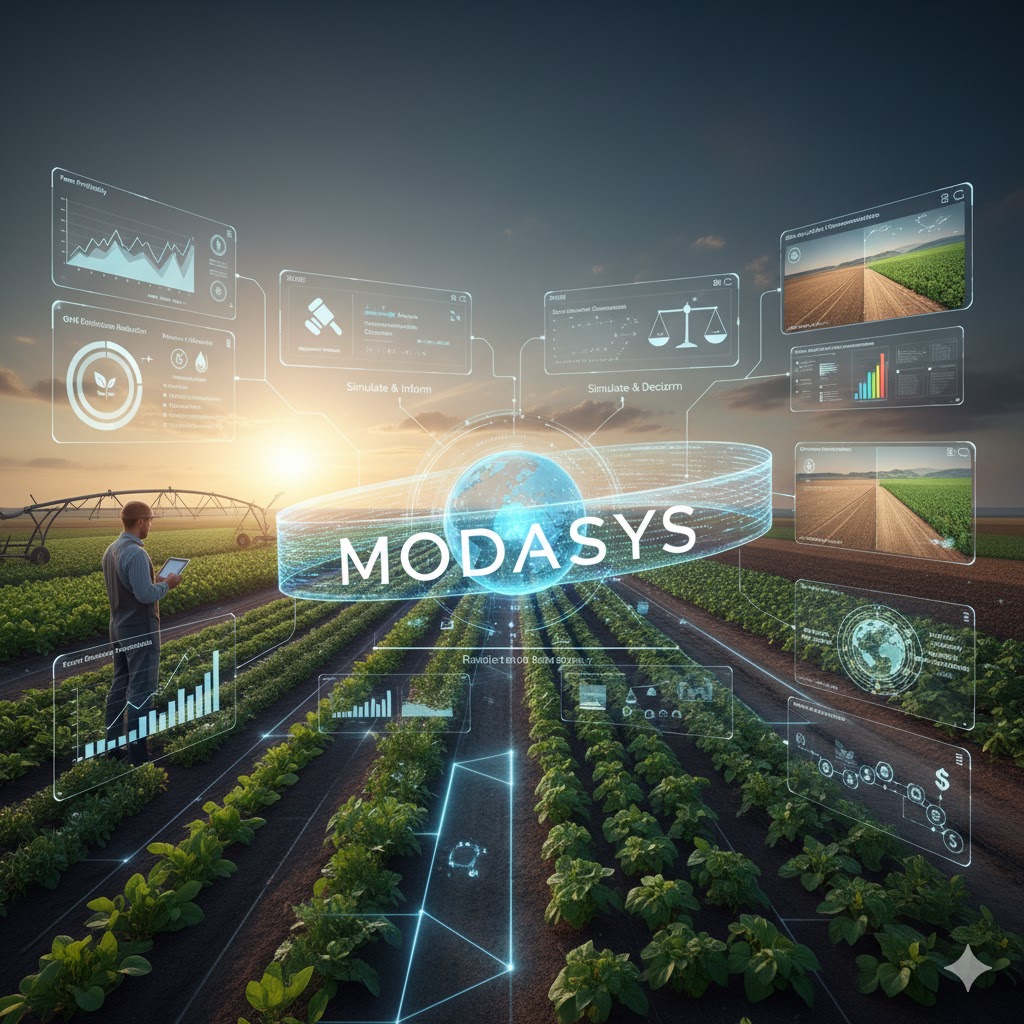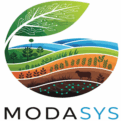What is MODASYS?
The Model for Decision-Making in Agri-Environmental Systems (MODASYS) is an integrated, quantitative, and multi-criteria assessment tool. It moves beyond single-focus simulations to provide a holistic view of agricultural system performance at the land parcel through the landscape to the regional levels.
The digital tool is being developed to face the Challenges of Agri-Environmental Decision-Making, for example, producing food securely, maintaining socio-economic viability, and urgently addressing environmental crises like climate change, land degradation, and biodiversity loss. Decisions made in one area inevitably impact the others, creating complex trade-offs that conventional tools struggle to address.
The MODASYS is a powerful tool with four core, integrated goals:
1. Optimised Multi-Criteria Performance & Trade-Off Analysis, quantifying the balance between risk-adjusted profit, production, and multiple environmental outcomes, including soil health and biodiversity;
2. Evidence-Based, Multi-Scale Decision Support, providing prescriptive, spatially-explicit recommendations from the farm-plot level up to national policy design;
3. Accelerating Sustainable Practice Adoption & Impact, by clearly demonstrating the quantifiable financial and environmental return on investment (ROI) of climate-smart practices under various future scenarios;
4. Standardised Environmental Performance Reporting serves as a validated, transparent platform for producing the verifiable metrics required for result-based payments, carbon farming, and national inventory reporting.

MODASYS Development History
Initial Modelling and Framework Adoption
Our initial modelling efforts employed various process-based models. This work was significantly constrained by limited access to the source code, which hampered effective model calibration. Recognising the need for a whole-farm context to enable socio-economically viable climate change mitigation and adaptation decision-making, we adopted the Canadian Holos model (v 4.0, AAFC). This adoption occurred during the GHG-Manage project under ERA-GAS FACCE. We thoroughly tested the Holos framework and found it highly promising for further development and refinement.
HOLOS-IE Development and Funding Challenges
Following the successful testing of the Holos model, we proposed its advancement within the ReLive project, funded by the ERA-NET Cofunds SusAn, FACCE ERA-GAS, ICT-AGRI-FOOD, and SusCrop (www.relive-era.net). However, progress was limited due to constraints in funding and manpower. Shortly thereafter, we secured crucial funding from Science Foundation Ireland (now Research Ireland) via the European Commission Recovery and Resilience Facilities and the Government of Ireland under the Future Digital Challenge Grant. This enabled us to collaborate with the ReLive project and focus on developing a localised version for Ireland, resulting in the creation of HOLOS-IE (www.ucd.ie/holos-ie).
The HOLOS-IE software is currently available for wider use. While it is not an open-source model and is specifically an Irish version, its core structure allows it to be applied in other countries by substituting country-specific soil and climate input data.

Transition to MODASYS (HOLOSEU) and Open-Source Goal
Building on the proven usefulness of HOLOS-IE (v 4.5), we are now developing an open-source EU/global version of the model. To avoid contradictions and confusion regarding the original model sources, this new version has been renamed MODASYS (Model for Decision-Making in Agricultural Systems) and is being developed through the HOLOSEU project (www.holoseu.net): “A Comprehensive Digital Platform for Land Use Planning, Carbon Foot-printing and Decision-Making in European Agriculture”. This project is funded by the ERA-NET Co-Fund ICT-AGRI-FOOD through 7 national funding agencies. UCD serves as the coordinator and lead modelling team, collaborating with several EU partners (Germany, Finland, Poland, Romania, Turkey, and Estonia).
Our current goal is to make MODASYS a valuable tool for various stakeholders. The long-term objective is to transform it into a more dynamic and comprehensive agricultural systems model by continuously developing and integrating new modules.
